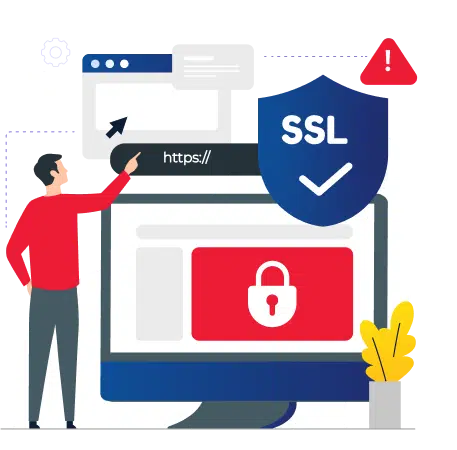Network Segmentation Penetration Testing at Securityium offers comprehensive benefits that significantly enhance the security and compliance of your network infrastructure. By engaging in our Network Segmentation Penetration Testing services, organizations can proactively identify and address potential vulnerabilities within their network segments. This approach ensures that network segmentation controls are rigorously tested against various attack vectors, providing a detailed understanding of security weaknesses and enabling effective remediation strategies. Our Network Segmentation Pentesting services not only fortify network security but also align with best practices and regulatory requirements, offering robust defense against potential cyber threats. Below, we outline the key benefits of our Network Segmentation Penetration Testing services.
- PCI DSS Compliance: Network Segmentation Penetration Testing is crucial for ensuring PCI DSS compliance. Our Network Segmentation Penetration Testing services verify that your network segmentation controls are effective and compliant with PCI DSS requirements. This verification process helps organizations avoid regulatory penalties associated with non-compliance. By thoroughly evaluating your network’s segmentation architecture, we ensure that all controls meet the stringent standards set by PCI DSS. This compliance not only protects sensitive cardholder data but also enhances your organization’s reputation and trustworthiness in handling payment information.
- Reduced PCI Audit Scope: Effective network segmentation, verified through Network Segmentation Penetration Testing, can significantly reduce the scope of your PCI audits. Our Network Segmentation Penetration Testing services identify and fortify weak points in your network segmentation, thereby limiting the areas that fall within the PCI audit scope. This reduction makes the compliance process more manageable and less time-consuming. By focusing the audit on a smaller, well-secured segment of your network, you can streamline your compliance efforts and reduce the resources required for the audit & maintenance. This efficiency translates into cost savings and improves operational effectiveness.
- Risk Mitigation: Network Segmentation Penetration Testing plays a vital role in mitigating risks associated with network breaches. Our Network Segmentation Penetration Testing services identify vulnerabilities such as misconfigurations and weak access controls that could be exploited by attackers. By addressing these vulnerabilities, organizations can significantly reduce the risk of unauthorized access to sensitive data and critical systems. This proactive risk mitigation strategy ensures that your network segments are resilient against potential threats, providing a robust defence mechanism. Our detailed reports and recommendations guide you in implementing effective security measures to enhance your overall network security posture.
- Increased Incident Response: Network Segmentation Penetration Testing enhances your organization’s incident response capabilities. Our Network Segmentation Penetration Testing services evaluate how well your network segmentation controls can detect and respond to security incidents. By testing the effectiveness of logging and monitoring mechanisms, we ensure that any segmentation-related events are promptly detected and addressed. This increased incident response capability allows organizations to react swiftly to potential breaches, minimizing damage and ensuring continuous protection of sensitive data. Effective incident response is a critical component of a robust security strategy, and our testing services help you achieve this goal.
- Enhanced Access Controls: Enhanced access controls are a direct benefit of Network Segmentation Penetration Testing. Our Network Segmentation Pentesting services assess the effectiveness of access controls and boundary protections within your network segments. By identifying weaknesses and recommending improvements, we help organizations strengthen their access control mechanisms. This enhancement ensures that only authorized personnel can access sensitive areas of the network, preventing unauthorized access and potential data breaches. Robust access controls are essential for maintaining the integrity and security of your network, and our testing services provide the necessary insights to achieve this.
Secure your network with Securityium’s Network Segmentation Penetration Testing services. Contact us today to identify and address vulnerabilities, ensuring robust protection for your critical data and maintaining PCI DSS compliance.




























